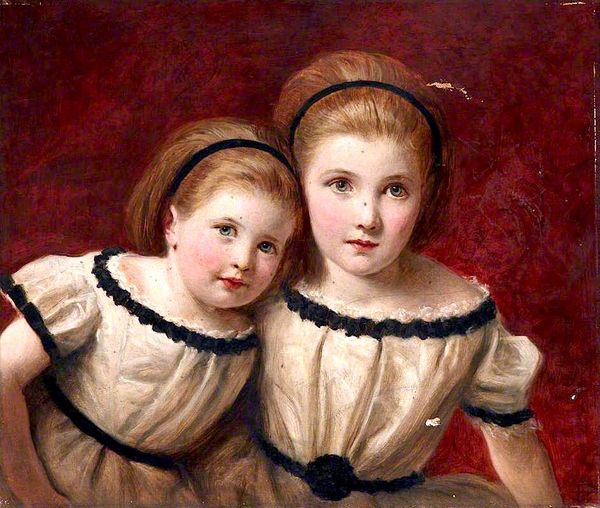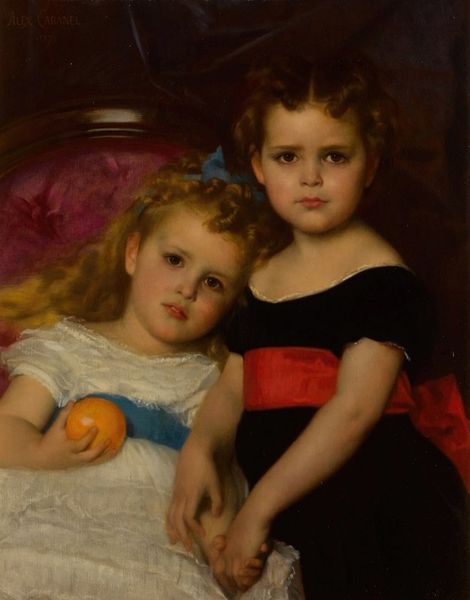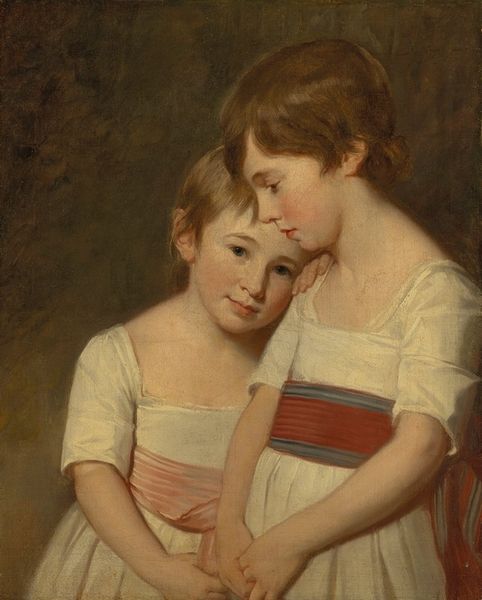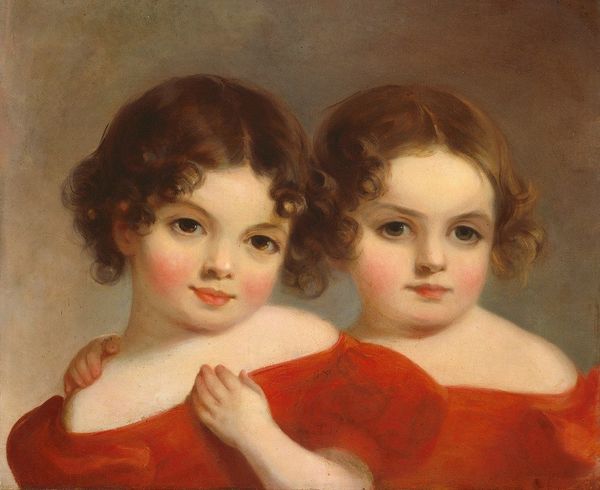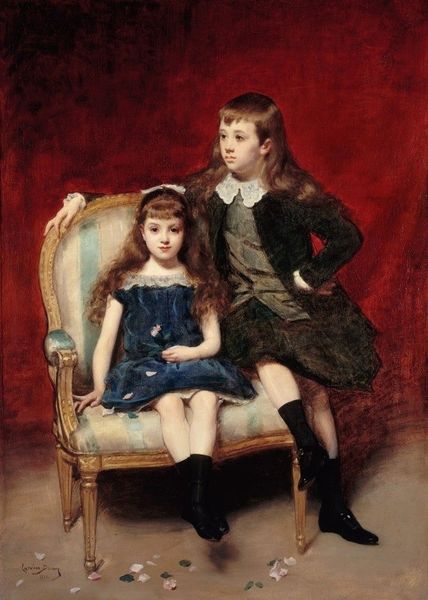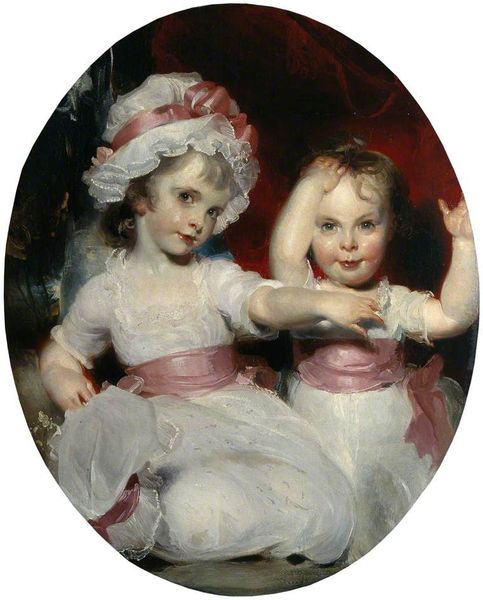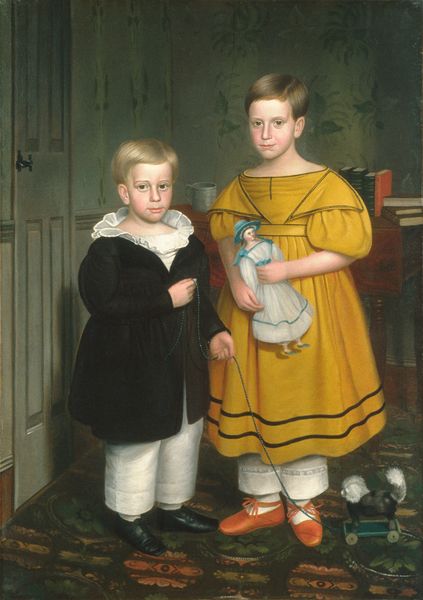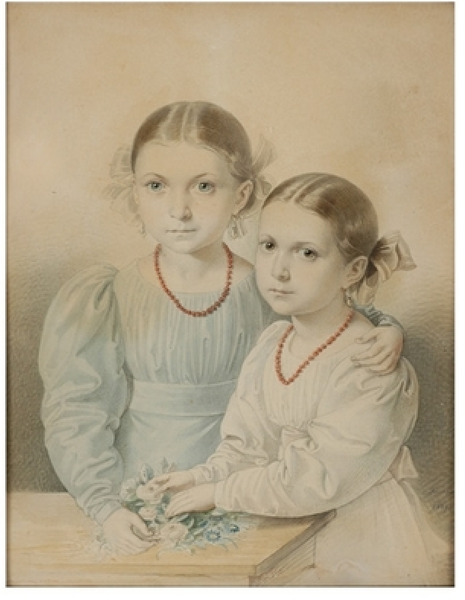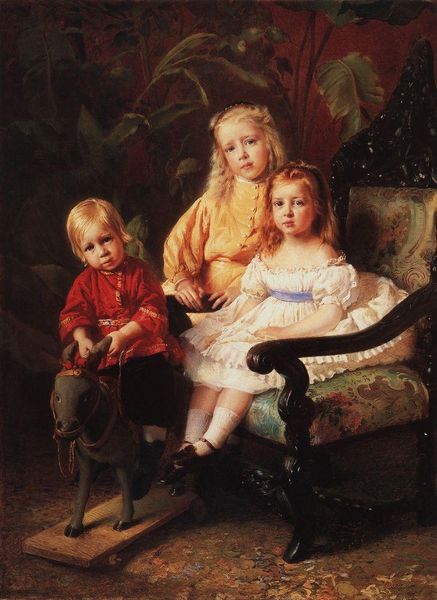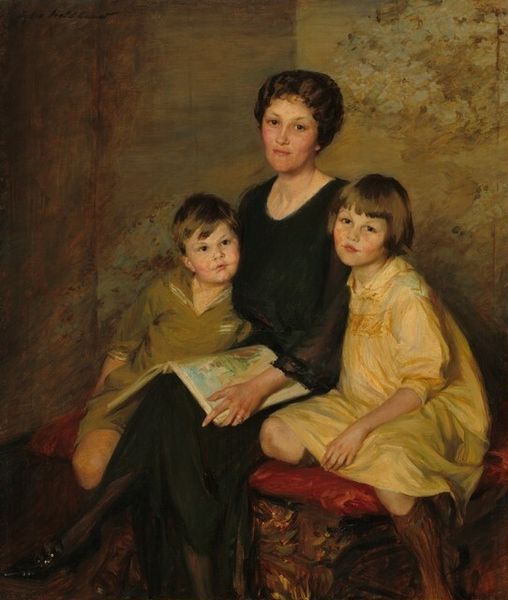
painting, oil-paint
#
portrait
#
narrative-art
#
painting
#
oil-paint
#
figuration
#
group-portraits
#
romanticism
#
academic-art
Dimensions: 25 x 31 cm
Copyright: Public domain
Editor: We're looking at "Children" by Ferdinand Georg Waldmüller, created in 1834. It’s an oil painting depicting two young children. The painting has an interesting sense of formality to it, but the children's clasped hands give a sense of warmth and intimacy. What do you see in this piece? Curator: I see a carefully constructed representation of childhood, embedded within the specific socio-political context of 19th-century Europe. Waldmüller, known for his Biedermeier style, often depicted idyllic scenes, but it's important to question whose "idyllic" vision this reflects. Look at their clothes: who would these portraits have been made for, and what values are embedded in the commissioning of art like this? Editor: So, you're saying it's not just a simple portrait of children, but something more? Curator: Precisely. Think about the power dynamics at play. Children of this era, particularly those from privileged backgrounds, were often presented as symbols of family legacy and social status. This painting isn’t just about the children; it reflects societal expectations around innocence, class, and the transmission of bourgeois values. To what extent does it present a sentimental or perhaps sanitised vision? Editor: That makes me consider the way they are positioned in the painting, very proper and almost posed to meet certain expectations, in the social and family spheres. Curator: Exactly! And by recognizing that, we can understand it through intersectional narratives relating to social class and family identity in Austria. Consider this, what if a Black or Brown child was to appear in art like this at this time? What would their experience look like? How might it change the dialogue? Editor: This reframes how I see portraits from this period. Thanks for making me consider all of these perspectives! Curator: It's all about engaging with art critically and historically. And seeing how art not only reflected society, but participated in actively constructing those cultural dynamics and even shaping them, particularly for those excluded from those projections.
Comments
No comments
Be the first to comment and join the conversation on the ultimate creative platform.
